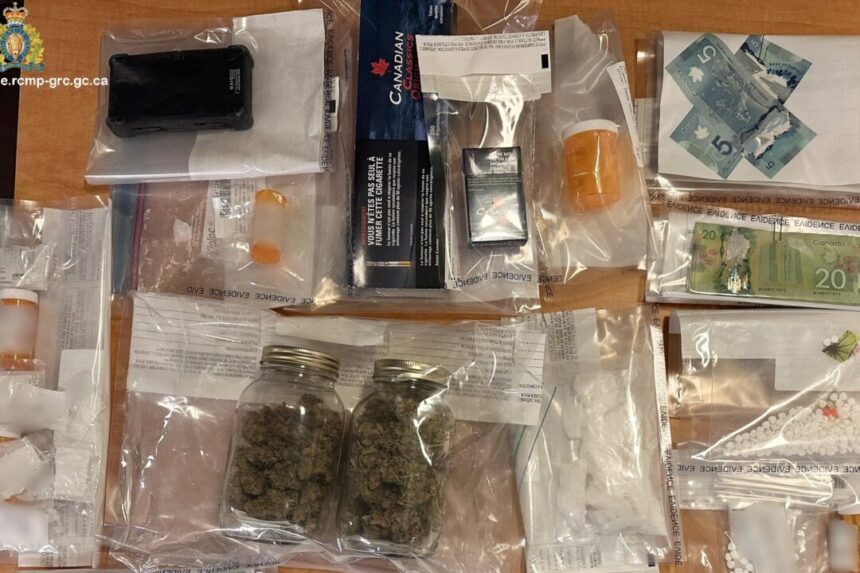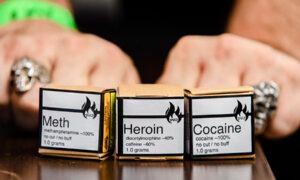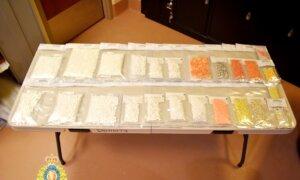Drug dealers are obtaining large amounts of government-funded safer supply opioids, says the RCMP in Prince George, B.C. A spokesperson said the drugs are obviously being sold somewhere, but she couldn’t reveal whether an ongoing investigation has found them ending up in the hands of teenagers.
Some addictions workers and teenagers in British Columbia have said safer supply opioids are now common recreational drugs for youth, and some are getting hooked. It’s a concern at the heart of a national debate on safer supply. To what extent are the drugs helping addicts avoid overdose on more potent street drugs? To what extent are they fuelling addiction?
“Is it going into the hands of our youth? Is it going to other people under the guise of being ’safer’ because it was prescribed medication? Organized crime is making profit off of this somehow,” RCMP Cpl. Jennifer Cooper told The Epoch Times on April 8.
Investigators have witnessed people coming out of pharmacies with their safer supply drugs and being immediately targeted by alleged drug dealers, Cpl. Cooper said. She couldn’t discuss any leads investigators may have on where the drugs are being sold.
“Those are still ongoing investigations, and I would hate to compromise any of the hard work being done,” she said. “Our investigative theory is that these drugs are going somewhere—they’re being bulk collected. These are not small amounts that we are locating and finding through our investigation. It’s large amounts. So it’s going somewhere.”
Dr. Mark Mallet, a hospitalist at Victoria General Hospital, says some of it is certainly being sold to teenagers.
“We know anecdotally that youth are becoming addicted to opioids via safer supply. I personally know someone this has happened to, and I have spoken to a number of local doctors who have teenage patients this has happened to. I also have teenage kids who tell me they know other high school students who have become addicted to safer supply opioids,” he told The Epoch Times in an email.
Health Canada spokesperson Tammy Jarbeau told The Epoch Times in an email on April 8 that the department is currently reviewing applications for funding. She said it’s looking to start any new funding on June 1 and that the new funding could cover program operations through to March 31, 2028.
Diversion Concerns in London, Ont.
That program is the Safer Opioid Supply Program at the London InterCommunity Health Centre, which began operation in 2016. It received confirmation it will be funded for another year, according to reporting by CBC.
MPs asked her repeatedly if she is aware of reported diversion at Chapman’s Pharmacy near her clinic. Pressed for a “yes” or “no” answer, she said “I’m going to decline to answer a complicated question without being given a chance for a complicated answer.”
They asked Dr. Sereda if she feels morally responsible for the medications she prescribed that may be sold on the street.
“I am morally responsible for my patients to stay alive,” she said. She spoke of her patients being worried they will have to go back to more dangerous street drugs if the program ends. They would also have to go back to paying for their drugs and the struggles that entails, she said. That includes risky behaviours associated with getting money for drugs and loss of housing due to inability to afford it while also feeding a drug habit.
“I started seeing the problems of diversion, more addiction, younger people using, people … moving to encampments near the pharmacy where much of the diversion takes place,” she said. “I also lived within 1 km of the program and watched my neighbourhood deteriorate.”
“People who were initially the ones the program intended to help are often vulnerable and are forced into giving up much of their [prescriptions],” she added.
With the increase in the use of opioids, illicit fentanyl has made its way into our community.
Dr. Sereda assured the MPs that there is no proof that the safer supply drugs are being accessed by children.
Dr. Mallet informed The Epoch Times that the lack of evidence is due to the fact that no one is actually collecting it.
Dismissal of Concerns Regarding Teenagers
B.C. and federal authorities have largely disregarded worries about teenagers obtaining safer supply.
B.C. officials often refer to data from the coroner’s office showing that deaths from hydromorphone overdoses are not occurring. Hydromorphone is the primary safer supply drug, although the province is now introducing safer supply fentanyl and other substances. Hydromorphone is also commonly known as Dilaudid or “Dillies” on the streets.
Although youth may not be succumbing to hydromorphone overdoses, the concern lies in young individuals starting their addiction journey with hydromorphone and then transitioning to the more potent effects provided by fentanyl.
Dr. Mallet also mentioned that officials sometimes point to the low number of Opioid Use Disorder (OUD) diagnoses among youth.
“However, typically, an individual would need to be a long-time user to receive this diagnosis formally,” he explained. “There is usually a significant delay between the initiation of opioid use and the formal diagnosis. Many opioid users have never been officially diagnosed.”






